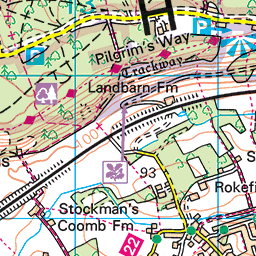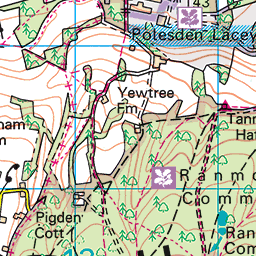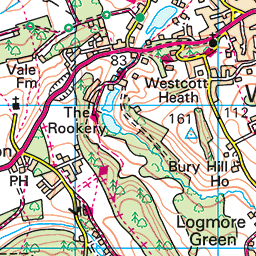Stage 4 GOMSHALL to WESTHUMBLE (13th September 2014).
To reach Gomshall you can take a train from Clapham Junction to Redhill then another short ride to Gomshall station but note this latter service runs only 2 hourly. Alternatively there is an hourly bus service between Guildford and Redhill which passes through Gomshall.
From the train station turn left from the exit down a lane to join a main road where you turn right. Then turn right up Colekitchen Lane which becomes a steep hollow way. Turn left off the road at a track leading to several houses. Continue on the track past the last house (Hillside), up through woodland, finally turning right to join the NDW on metalled path on a level through open woods, mainly beech, yew and oak. It was perfect early autumn walking weather, dappled sunshine through green leaves, plenty of flowers (knapweed, foxgloves, ox-eye daisies and cinquefoil) and plenty of attendant speckled wood butterflies. And a fine autumnal crop of mushrooms and fungi.
This part of the path, across Netley Heath, is labelled on the OS map as a droveway, formerly used to transport animals on the hoof from farm to market. At Little Kings Wood there is a sudden opening in the trees giving a fine view down into the valley to Colekitchen Farm and south across the Tillingbourne valley to the wooded hills of the Greensand Ridge. In this part of the Surrey Hills AONB the heavily wooded hillsides almost completely mask signs of human habitation, although a main road, a railway line and several commuter villages are hidden somewhere below you. Soon after this viewpoint the NDW turns right off the metalled track. The woodland walk crosses several small open areas with good views. There are useful information panels within the National Trust land on Hackhurst Down about wildlife, geology and land use. Walkers in southern Britain tend to take chalk downland for granted, in fact it is very unusual globally and not at all widespread. Over half the world total is in England.
The track is punctuated by more than a dozen pillboxes, part of a WWII 'stop line' defence. Some of these are now preserved monuments. Coming to a gate at White Downs the path follows a (boundary?) bank and ditch before turning right along a level section. There had been many large trees downed in recent storms, some trees blocking the original path so makeshift detours have evolved. Take care not to lose the true NDW track here. On an open down near Picketts Hole we saw a lazily circling buzzard. Here also belted Galloway cattle are being used by the National Trust to browse the downland.
After a long straight woodland stretch the path opens out onto Ranmore Common and Denbies Hillside, with great views of Dorking and the landscape far beyond, even to the South Downs. The path meets and crosses Ranmore Road, then following a quiet minor road past St. Barnabas Church (open for a much appreciated tea stop when we were there). This road passes the big house and estate of 'Denbies' and then soon after the track turns right, down a narrow alleyway, shortly turning left onto a metalled section above the Denbies Vineyard (the largest in Britain).
The path sweeps round and descends gently until just past the entrance to the vineyard the houses of Westhumble appear. After a further 300m watch out for a footpath sign to the left, heading across a field to a narrow path between houses. This path crosses a road to another narrow section between gardens before reaching a road where you turn right. A footpath is separated from the road until another road junction where the road crosses the railway line. Cross the bridge and turn right to reach Westhumble and Box Hill train station. The attractive building has few rail facilities but does have a combined cycle shop and cafe. There is an hourly service to Clapham Junction.
Total distance walked 14.4 km (9.0 miles) Total time 4h0mins Ascent 355m.
Get Ordnance Survey maps on your website to enhance the service and customer experience.















 Speckled wood butterfly on brambles
Speckled wood butterfly on brambles Tillingbourne Valley
Tillingbourne Valley Chalk path through mixed woodland
Chalk path through mixed woodland